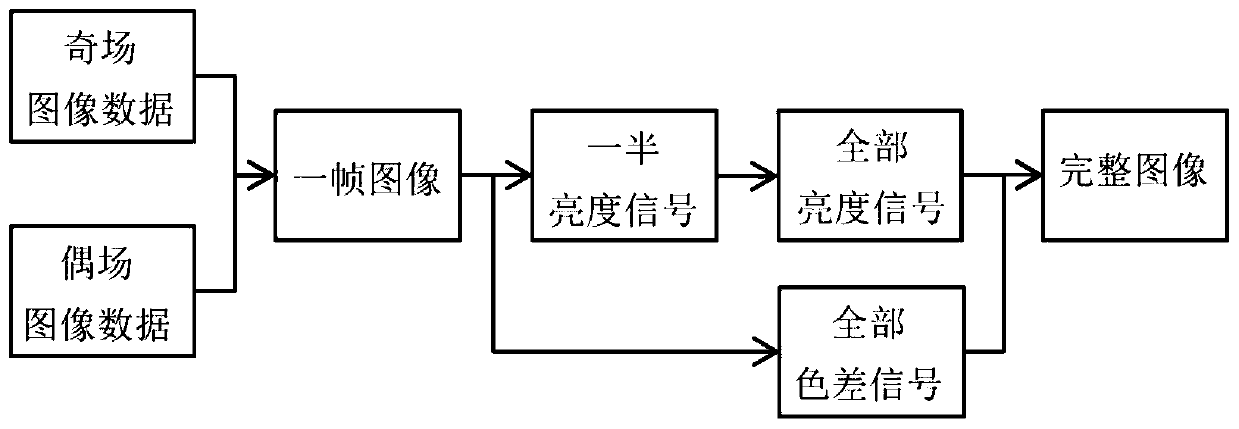Video Processing Method Applied to Embedded System
An embedded system and video processing technology, applied in the field of video processing, can solve problems such as poor ability to read floating-point numbers, no way to interleave, and failure to meet requirements, etc., to speed up the operation speed, improve the operation speed, and solve the problem of sawtooth and horizontal The effect of striae problem
- Summary
- Abstract
- Description
- Claims
- Application Information
AI Technical Summary
Problems solved by technology
Method used
Image
Examples
Embodiment 1
[0018] The invention provides a video processing method applied to an embedded system, the specific principle is as attached figure 1 as shown,
[0019] The method specifically includes the following steps:
[0020] Step S1, alternately scanning progressively to obtain odd field image data and even field image data;
[0021] Step S2, combining the odd-numbered field image data obtained by progressive scanning at the previous moment and the even-numbered field image data obtained by progressive scanning at the current moment to synthesize a frame of image;
[0022] Step S3, obtaining all the luminance signals by synthesizing half of the luminance signals of one frame of images;
[0023] Step S4, combining all the luminance signals and all the color-difference signals of one frame of image to synthesize a complete image.
[0024] In the embodiment of the present invention, preferably, all brightness signals are obtained in step S3, specifically, taking half of the brightness ...
Embodiment 2
[0026] The present invention provides a kind of video processing method that is applied to embedded system, and this method specifically comprises the following steps:
[0027] Step S1, alternately scanning progressively to obtain odd field image data and even field image data;
[0028] Step S2, combining the even-numbered field image data obtained by progressive scanning at the previous moment and the odd-numbered field image data obtained by progressive scanning at the current moment to synthesize a frame of image;
[0029] Step S3, taking half of the luminance signal of a synthesized image and performing quadratic linear interpolation algorithm processing to obtain all luminance signals;
[0030] Step S4, combining all the luminance signals and all the color-difference signals of one frame of image to synthesize a complete image.
PUM
 Login to View More
Login to View More Abstract
Description
Claims
Application Information
 Login to View More
Login to View More - R&D
- Intellectual Property
- Life Sciences
- Materials
- Tech Scout
- Unparalleled Data Quality
- Higher Quality Content
- 60% Fewer Hallucinations
Browse by: Latest US Patents, China's latest patents, Technical Efficacy Thesaurus, Application Domain, Technology Topic, Popular Technical Reports.
© 2025 PatSnap. All rights reserved.Legal|Privacy policy|Modern Slavery Act Transparency Statement|Sitemap|About US| Contact US: help@patsnap.com

